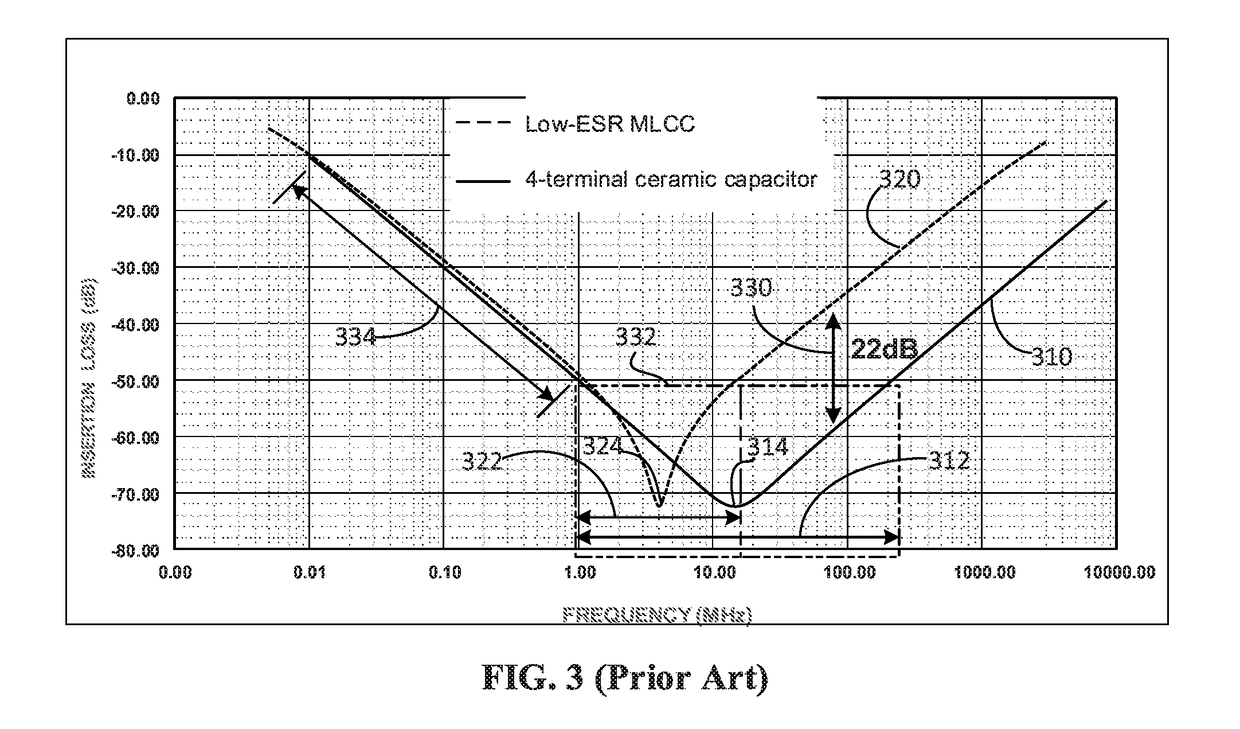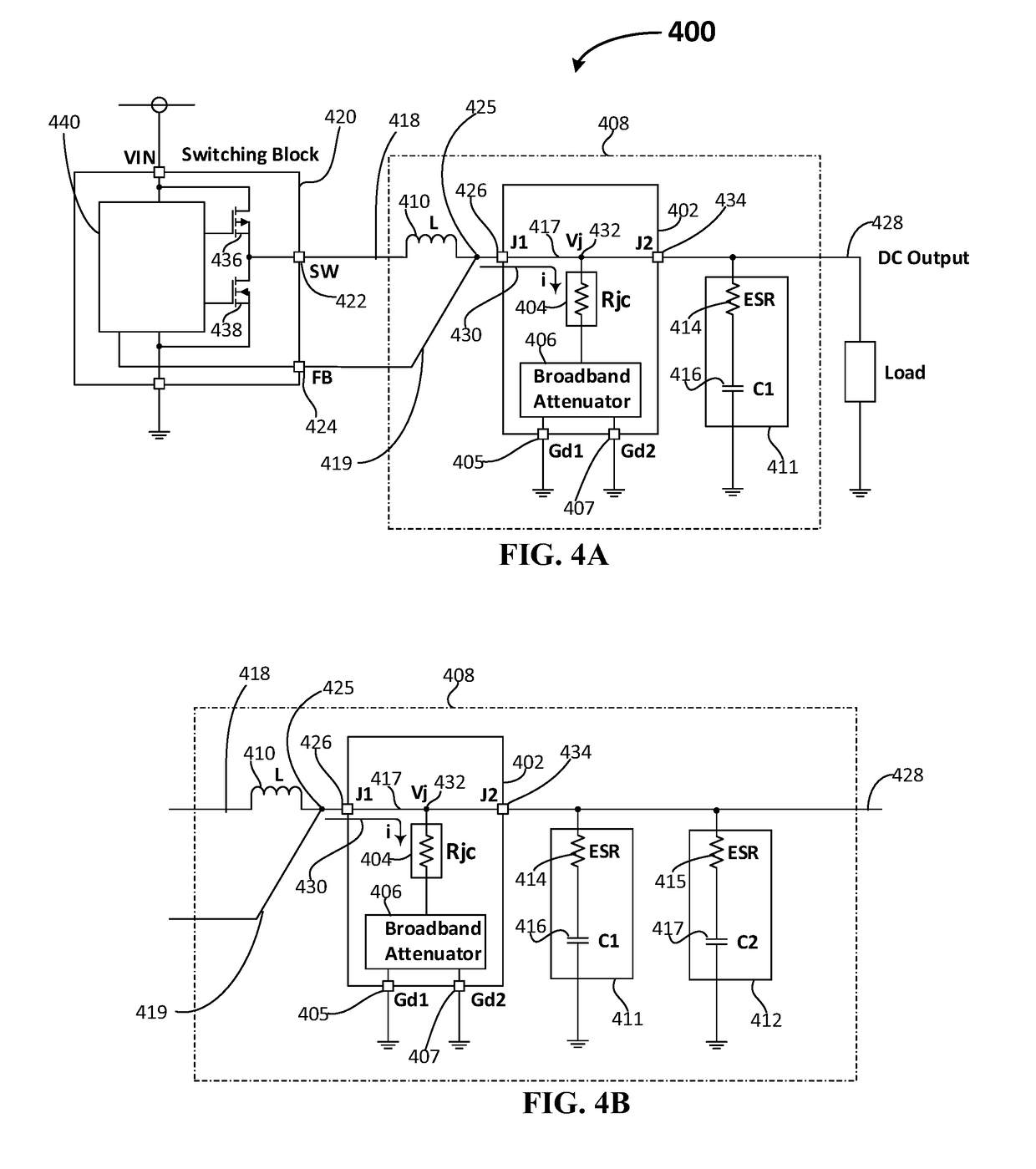Circuit Arrangement For Switching Noise Jitter (SNJ) Reduction In Feedback Control Loop Circuits, And Methods Of Making The Same
a feedback control loop and circuit arrangement technology, applied in the direction of electric variable regulation, process and machine control, instruments, etc., can solve the problems of short battery life, low conversion efficiency, and perceived supply bias noise, and achieve enhanced user experience and improved battery life without compromising maximum wireless and system performance.
- Summary
- Abstract
- Description
- Claims
- Application Information
AI Technical Summary
Benefits of technology
Problems solved by technology
Method used
Image
Examples
Embodiment Construction
[0038]Construction of control circuits, averaging filters, and DC-DC converters using a passive signal conditioning device are described in the following description using specific language that has been briefly introduced in the previous section of BACKGROUND OF THE INVENTION and FIGS. 1, 2 and 3. Numerous specific details are set forth, such as circuit topology, circuit models, circuit functions, and circuit parameters, in order to provide a thorough understanding of embodiments of the present invention. Reference numbers may be repeated throughout the embodiments and Figures for properly indexing certain circuit parameters with respect to specific circuit elements. It will nevertheless be understood that the embodiments and examples are not intended to be limiting. Any alterations and modifications in the disclosed embodiments, and any further applications of principles disclosed in this document are contemplated as would normally occur to one of ordinary skill in the pertinent a...
PUM
 Login to View More
Login to View More Abstract
Description
Claims
Application Information
 Login to View More
Login to View More - R&D
- Intellectual Property
- Life Sciences
- Materials
- Tech Scout
- Unparalleled Data Quality
- Higher Quality Content
- 60% Fewer Hallucinations
Browse by: Latest US Patents, China's latest patents, Technical Efficacy Thesaurus, Application Domain, Technology Topic, Popular Technical Reports.
© 2025 PatSnap. All rights reserved.Legal|Privacy policy|Modern Slavery Act Transparency Statement|Sitemap|About US| Contact US: help@patsnap.com



